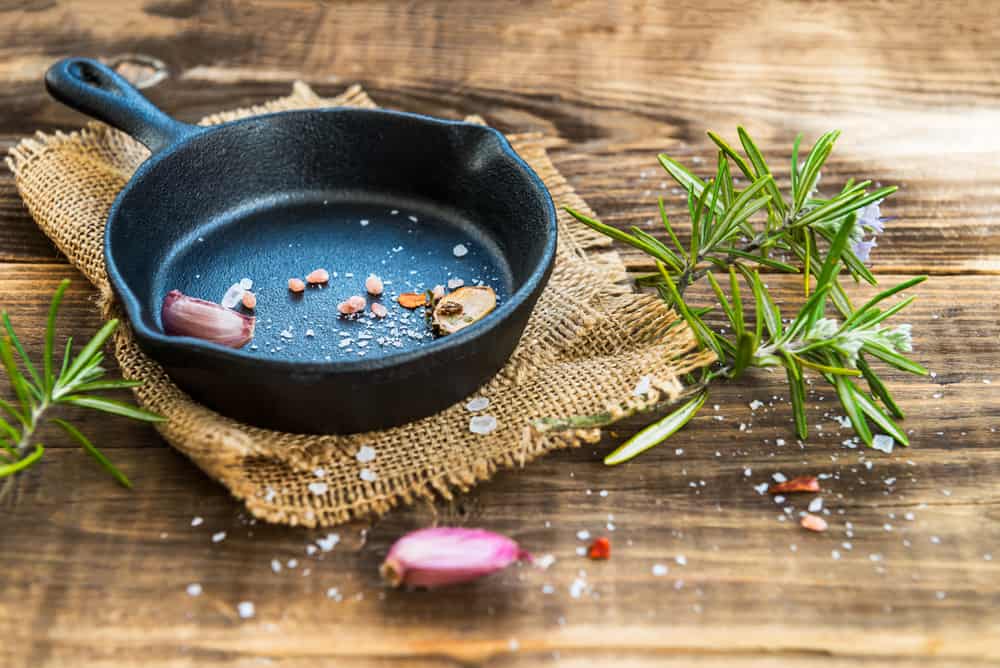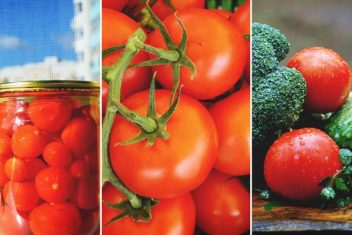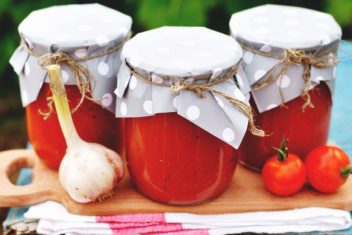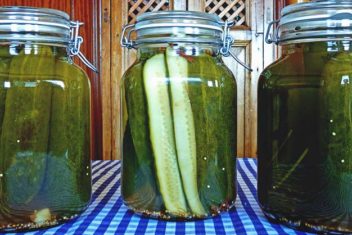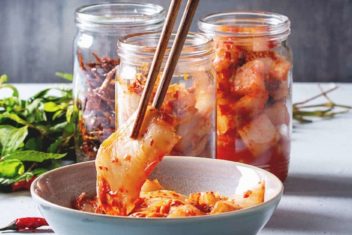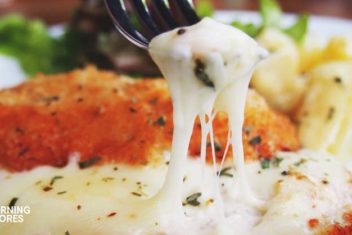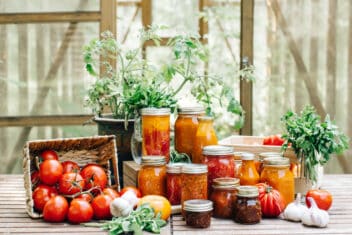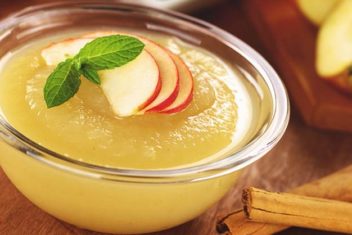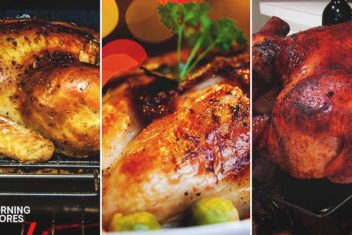There are a lot of chemicals in non-stick cookware that can negatively impact your health. That’s why many people use cast iron. Others cherish it because it can create such a nice sear on meats.
But for some people, cast iron has a reputation for being hard to cook with, keep clean, or store.
Don’t worry, with just a little extra effort, you can keep your cast iron cookware in top condition and it can last for generations.
If you want to get the best out of your cast iron cookware, let’s explore what it is and how to care for it.
What is Cast Iron?
This is an important question to consider because why use cast iron when you have a perfectly good non-stick pan or pot?
Cast iron has a natural non-stick surface and contains no harmful chemicals, plastics, or coatings. Non-stick pans can release potentially harmful chemicals into your home’s air, and once they get scratched, they can’t be restored.
But cast iron can be restored if it gets scratched.
It also heats up more evenly and holds heat better than other metals, which means it cooks your food better. You haven’t had cornbread until you’ve baked it in cast iron.
So how does cast iron manage all that?
The seasoned surface is naturally non-stick through a process called polymerization.
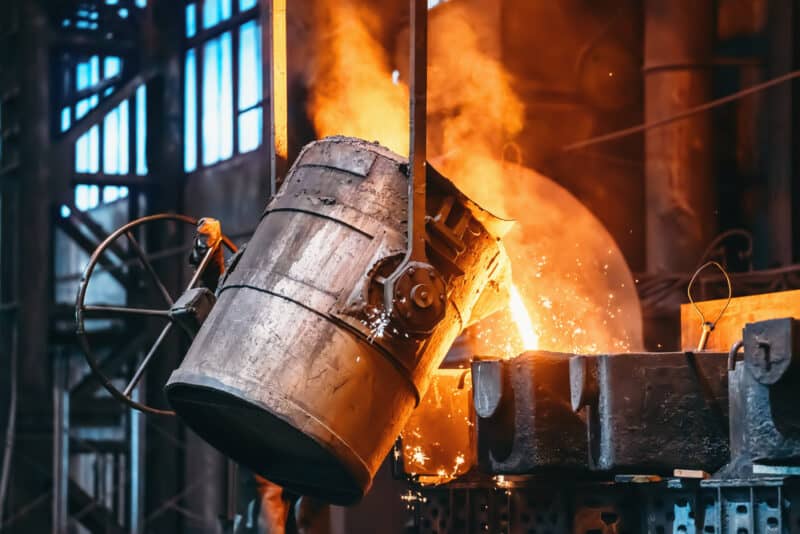
To keep it simple, cast iron is iron ore heated in a furnace until it is molten. It’s then cast or poured into an ingot known as a pig to give it a crude shape. Alloys or other metals are sometimes added, depending on who is making it.
Then, the pig is remelted and poured into a mold of the final shape of the skillet, pot, or other cast iron cookware.
At that point, some manufacturers season the pan before offering it for sale. Lodge famously pre-seasons their cookware. Their 10.25-inch skillet is a classic option and is the first cast iron that many people start with.
Cast iron is often made out of one single piece of metal with no detachable handles or pieces to eventually fall apart.
Why Season Cast Iron Cookware?
It can take a little time to season and care for cast iron cookware, but if you look after it, your cooking experience with it will be fantastic, and it will last for generations.
Unseasoned cast iron will rust at even the thought of moisture. But seasoned cast iron is easy to cook with, doesn’t rust if you treat it right, lasts longer than most other pans, and some people find it more visually appealing than other options.
Some people even display their pans rather than hide them in cupboards.
Seasoning forms a non-stick surface and prevents food from sticking to the pan or skillet when cooking. The non-stick surface can be scraped off, and you can just re-season the pan. With non-stick pans, once the coating scrapes off, it’s done for.
What is Seasoning Cast Iron?
First, we’ll go over a little science to help show what seasoning your cast iron is and why it is important.
Seasoning is carbonized oil on the cookware’s surface that is baked on, creating a naturally non-stick, easy-to-use, and clean surface.
The more you cook with and season your cast iron, the thicker and darker this layer gets.
It’s why the pan gets better with age and will outlast its owner to be handed on to the next generation or friend. Some people are still cooking with cast iron that belonged to their great-grandparents.
When oil or fat on the surface of the cast iron is heated at high temperatures, it goes from a liquid to a hard surface.
This process of the oil turning from liquid and hardening to bond with the iron is called polymerization.
This layer protects the cast iron from rusting and keeps the food from sticking.
If you were to look at raw cast iron under a microscope, it has a porous surface, so this thickening layer smooths it out and fills in those holes.
How to Season Cast Iron Cookware
Many manufacturers preseason cast iron cookware so that when you take it home, it’s ready to go. It is still a good idea to season it yourself so that you know you have all the surfaces covered and it is in good condition for storage.
If you cook regularly with cast iron, clean it and season it each time with oil or fat. This is whether you use it all the time, or just occasionally when you cook outdoors or go camping.
8 Steps to Season New and Old Cast Iron
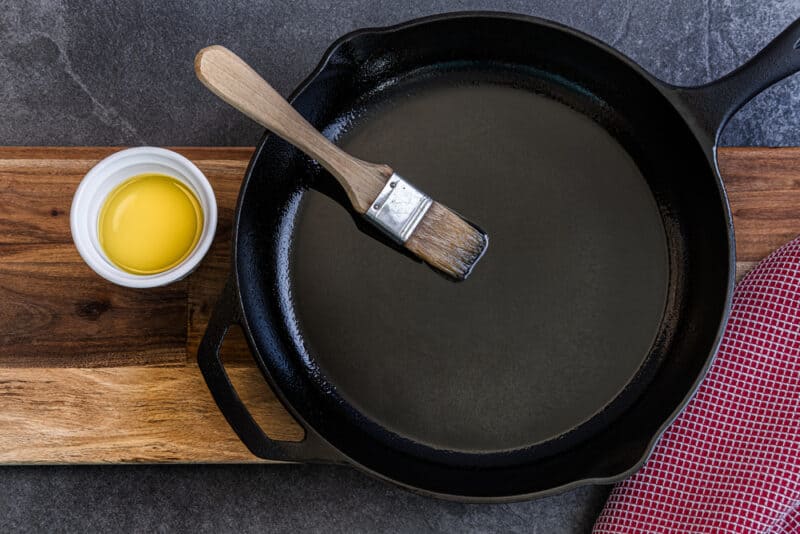
Before you start seasoning, you need to pick an oil. You need something that has a high smoke point because, presumably, you’ll be using your pan at high temperatures, and you don’t want it smoking.
Avocado oil, grapeseed oil, and shortening are all excellent options. They can withstand at least 420°F, with avocado oil able to heat up to 520°F without smoking.
Traditionally, lard was used to season cast iron, but only do this if you use your cast iron regularly as your main cookware. This is because animal-based fats can go rancid over time and this will affect the food quality and smell bad in the cupboard.
People also choose vegetable oil, flax seed oil, rice bran oil or sunflower oil. Play around and see which works best for you.
- Wash the cookware in warm, soapy water. Too much soap on seasoned cast iron can strip the seasoning, so don’t overdo it.
- Preheat the oven to 400-450ºF, depending on the oil you’re using. Place tinfoil or a tray on the bottom rack to catch any oil that drips off the cast iron cookware.
- Dry the cookware completely with a paper towel or warm the cast iron over low heat to dry it completely. This is the best method with young cast iron because it dries out the pores of the metal.
- Once dry and cool, add a thin layer of oil to the cookware and spread it over with a paper towel. Make sure this is a thin layer because we want to achieve that dark, oily surface in layers. Areas of oil thicker than others may be sticky at the end of the process, so try to smooth out a thin, even layer.
- Place the cookware upside down in the center of the oven. If you place it the right side up, oil can pool in spots, making it thicker in some areas than others.
- Bake for one hour before carefully removing and inspecting the surface. You should see a thicker, darker surface than before.
- Repeat the process as many times as you want. I generally do this at least three times. Yes, it takes three hours, but you can do other things while the cookware is in the oven. Just set a timer so you don’t forget.
- At the end of the last bake, let the cast iron cool in the oven. This step helps the oil form a robust surface.
How Often to Season Cast Iron
There are a few times you should season cast iron. They are:
- When it is obvious the surface is degraded, and food is sticking.
- When there is rust present, you have to clean this off.
- If you haven’t used it for a long time, it can pay to complete the seasoning process once.
- If you use cast iron regularly, you season it as you cook, but over time, the surface can degrade, so put aside a couple of hours to re-season it twice a year.
3 Steps to Cleaning Cast Iron
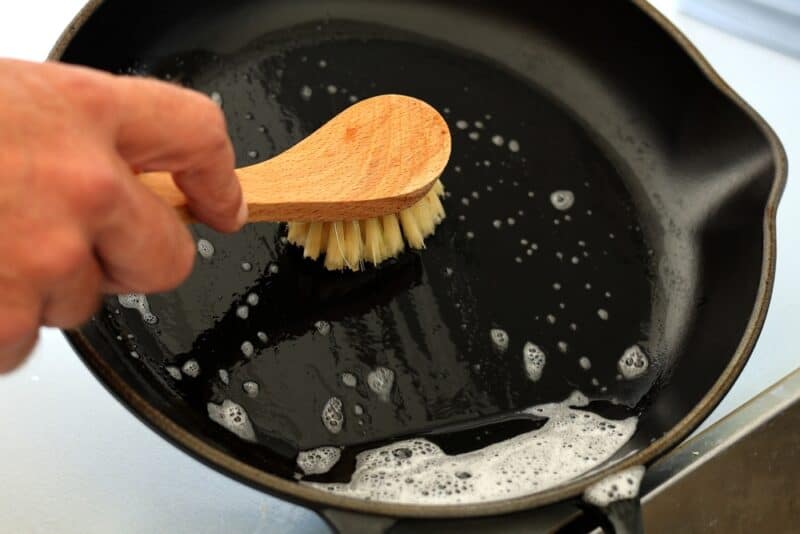
- Wash your cast iron by hand. Never put it in a dishwasher. The chemicals and processing are way too harsh. Use warm to hot water with a gentle pot scrubber or cloth. The cooking residue should wash off easily if you have a well-seasoned surface. You can use a little dish soap if you like, but put a minimal amount on the scrubber or cloth rather than the cookware.
- Rinse in warm water and dry thoroughly with a paper towel. Make sure all the moisture is dried away. The towel may be a little smeared with black. This is the seasoned surface and is a normal thing to happen. It doesn’t mean the cookware is still dirty and needs to be washed further.
- Apply a small amount of oil to a paper towel and rub this into the pan over the entire dish, not just the cooking surface. This protects it from rust and moisture. Use another clean paper towel to wipe away excess oil residue. Every few times you clean the pan, re-season it with oil as described above.
How to Store Cast Iron Cookware
First, you should only store the cast iron cookware if it is clean. Any food stuck to the pan will attract moisture, and then rust will result.
Store the cookware dry. It’s tempting to put it away with just a couple of passes of a towel, but even well-seasoned cast iron may rust if left wet. Don’t store it in areas of high humidity, like above the stove or sink.
Kitchen cupboards are usually suitable, but garages, basements, or sheds are not so much because they tend to be wetter.
Warmer drawers at the bottom of ovens are a good place to store cast iron cookware. The heat keeps the moisture away and the cookware dry.

Add a layer between the cast iron cookware and anything else. If you stack your cookware, use cloth towels or a couple of paper towels in between them. This will prevent scratches, which invite moisture and eventually rust, damaging the non-stick surface.
Remove the lid if the cast iron comes with one. Leaving it on can attract moisture inside the dish. Oil the lid and store it upside down with a paper towel between it and other cast iron pieces.
7 Tips to Make Your Cast Iron Last Forever
If you follow the steps above, your cast iron can last for generations. Seriously, visit any antique store and you’ll see pans that have been around a long, long time. Antique pans often have unique maker’s marks on the bottom, so look out for these.
Here are a few more tips to keep your cast iron looking as good as ever.
1. Don’t Cook Acidic Foods
Avoid long-simmering acidic sauces like tomato sauces or lemon and wine-based sauces. These are best cooked in stainless steel cookware. You can saute or cook acidic ingredients if they will only be in the pot for a little bit. Acid will degrade the seasoned surface quickly.
That said, lots of people cook acidic foods in their pans. If you decide to, be sure to season the cookware afteward.
2. Don’t Use Too Much Fat
Less is more when it comes to seasoning cast iron. No more than a teaspoon of oil will be enough to cover the inside and outside of the average 10-inch skillet each time you season it.
If you use too much oil, clean the pan with soap and try again with a thinner layer of oil.
3. Preheat Before Cooking
Preheat your cast iron before adding any food because this will bring out the non-stick properties of the seasoned surface. If you toss in your food while the plan is still cold, it might stick.
4. Don’t Soak Cast Iron
Don’t leave cast iron to soak in water. This is a definite way to help the pan develop rust.
And we’re not just talking about leaving the pan in a sink full of sudsy water. Don’t even fill the pan with water to let it soak for an hour or two. By the time you’re ready to scrub, there will be rust spots.
5. Season New Cookware
If you buy pre-seasoned cast iron, add a couple of layers of seasoning yourself. While the manufacturer probably did a great job, you want to add your own flavor and ensure that the pan is truly sealed well.
6. Don’t Be Afraid of Metal
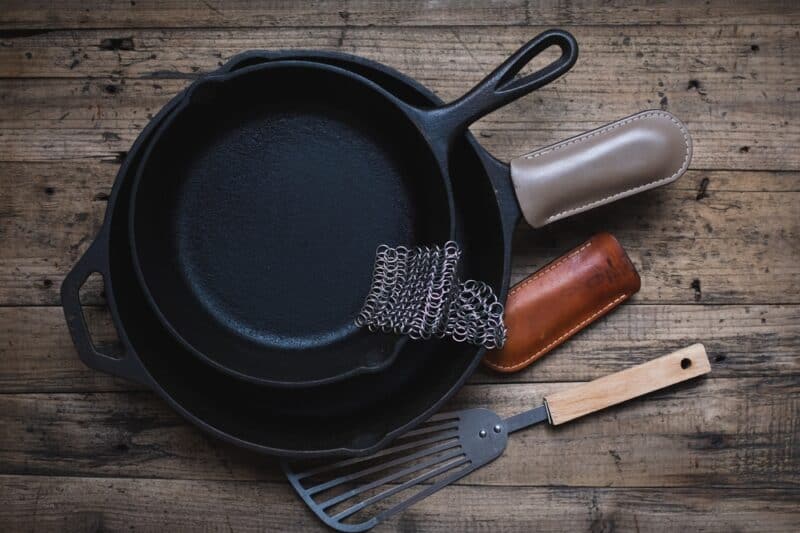
By all means, use metal utensils with your cast iron. If any of the seasoning scrapes off over time, just re-season it.
You can’t use metal tools with traditional non-stick cookware because it will scratch the surface and ruin the pan. But cast iron can just be re-sealed through seasoning.
7. Don’t Use the Dishwasher
We’ve said it before, but it bares repeating: keep cast iron away from your dishwasher. Don’t even think about it.
